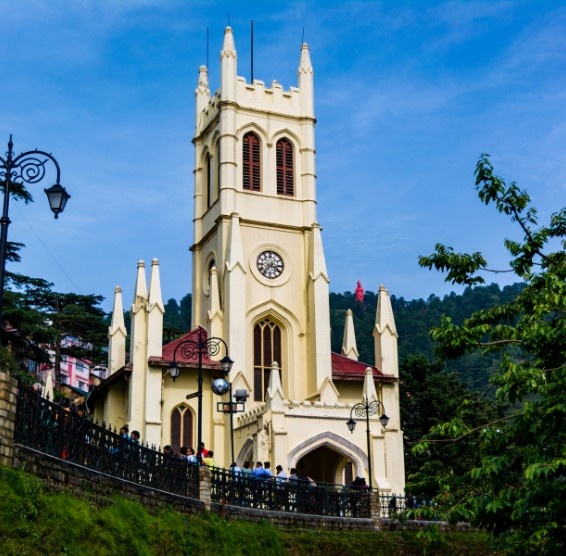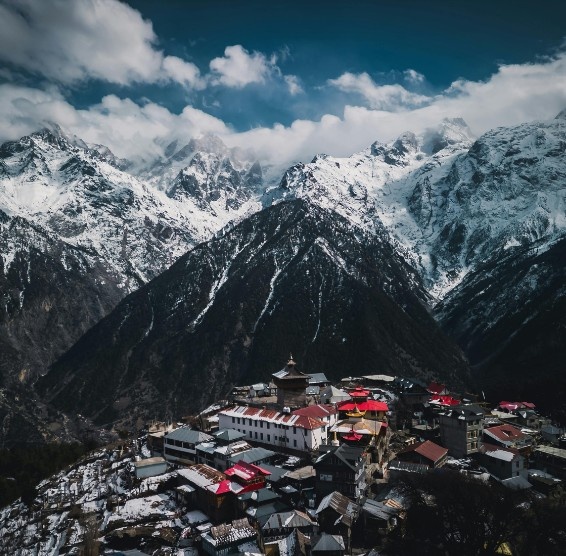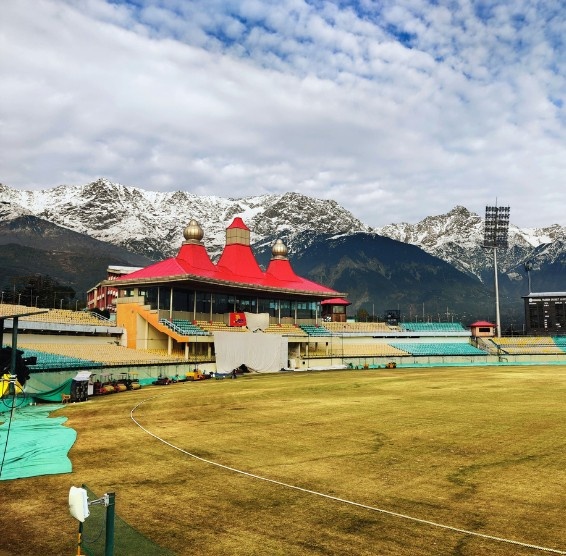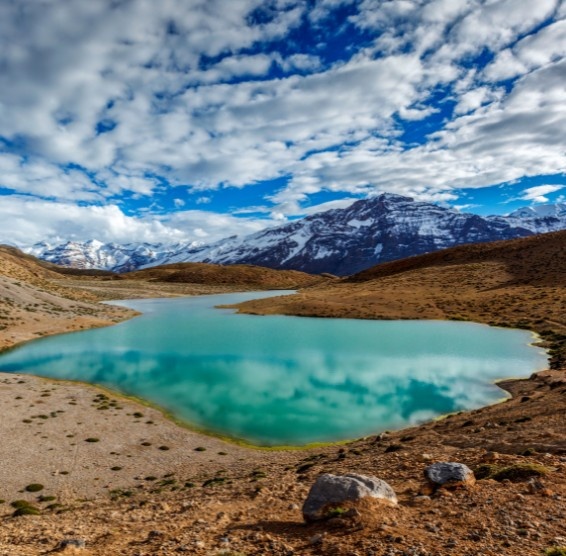You can get to Himachal by a flight, train, or car. The closest airports are in Dharamshala (Kangra), Shimla, and Kullu-Manali (Bhuntar). Chandigarh/Panipat (for broad gauge) and the hill train from Kalka to Shimla are two of the most important railheads. After that, hire a taxi or bus. Himachal is easy to get to by road because there are many buses and cabs that go there from Delhi, Chandigarh, and other cities. It takes about 7 to 8 hours to drive from Delhi with NH44. Once you're in the state, state-run HRTC buses and private buses connect towns and villages.
Best Himachal Tour Packages
Explore Beautiful Himachal with Premium and Budget customized tour packages
covering Shimla, Kullu-Manali, Kinnaur-Spiti & more. Book now!
Shimla Manali Tour Packages
Explore Shimla Manali tour packages with scenic views, adventure
sports and cozy stays, perfect for families, friends & couples.
Kinnaur Spiti Tour Packages
Experience the spiritual serenity of Kinnaur-Spiti with divine
monasteries, sacred valleys & peaceful Himachal vibes.
Dharamshala Dalhousie Tour Packages
Experience the perfect blend of spirituality in Dharamshala & dalhousie - Where peace meets the peaks.
Complete Himachal Tour Packages
Want to explore Complete Himachal ? Here, specially curated packages for all your needs. All of Himachal in one epic ride.
Adventure Tour Packages
Our thrilling Himachal adventure tour Packages offer trekking, river rafting, paragliding, and much more for adrenaline seekers to make unforgettable memories.
Exclusive Tour Packages
Tailor Made perfect Himachal tour plans to make your Dreamy vacation ideas become reality. Explore Now and plan your trip with your loved ones. Crafted for every kind of traveler.
Discover Himachal: Complete travel guide

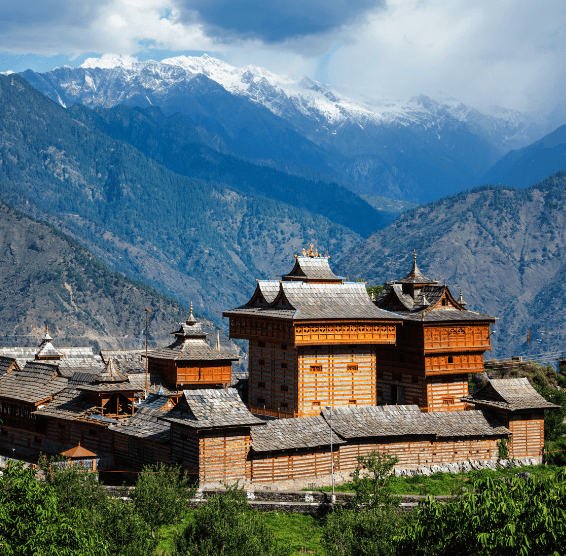
Brief History
Himachal Pradesh, which is also known as Dev Bhumi or the Land of the Gods, has a long and interesting history that goes back to ancient times and continues to the present day. Archaeological finds show that people lived here more than two million years ago, and there are signs of early farming and settlement in the foothills. Ancient Vedic texts and epics like the Mahabharata mention the area. Tribes like the Kinners, Nagas, and Kiratas lived in the hills and worshipped nature. As civilizations grew, Himachal became home to strong kingdoms like Trigarta (Kangra), Kuluta (Kullu), and Chamba. Buddhism also flourished during the Mauryan and Gupta periods, especially in places like Spiti and Kinnaur, where monasteries and trade routes to Tibet expanded. By the Middle Ages, many independent Rajput and local hill dynasties had formed. They left behind grand temples, forts, and a rich history of Pahari art and tradition. Mughals, Gorkhas from Nepal, and finally the Sikhs under Maharaja Ranjit Singh invaded the area between the 15th and 18th centuries. But the rough terrain often kept the hill rulers safe, and they were able to maintain some of their independence. Shimla was the summer capital of India during the British era. The British put changes to the infrastructure, education, and government that would ultimately shape the state's future. After India became liberated in 1947, the princely states were gradually brought together. Himachal became a Chief Commissioner's territory in 1948, a Union Territory in 1956, and finally a full state on January 25, 1971, making it India's 18th state. Dr. Y.S. Parmar, who designed modern Himachal, was the first Chief Minister. Himachal Pradesh is known for its peaceful development, prospering tourism, spiritual heritage, and strong connections to its past. Its history displays strength, resilience, and a culture that is based on both mythology and progress. Himachal today proudly maintains a balance between tradition and modernity. From historic temples to ecotourism destinations, the state combines responsible development with spiritual heritage. While villages maintain ancient customs, hill towns like Dharamshala host international discussions, resulting in a special fusion of history, culture, and evolving identity.
Himachal Pradesh, which is also known as Dev Bhumi or the Land of the Gods, has a long and interesting history that goes back to ancient times and continues to the present day. Archaeological finds show that people lived here more than two million years ago, and there are signs of early farming and settlement in the foothills. Ancient Vedic texts and epics like the Mahabharata mention the area. Tribes like the Kinners, Nagas, and Kiratas lived in the hills and worshipped nature. As civilizations grew, Himachal became home to strong kingdoms like Trigarta (Kangra), Kuluta (Kullu), and Chamba. Buddhism also flourished during the Mauryan and Gupta periods, especially in places like Spiti and Kinnaur, where monasteries and trade routes to Tibet expanded. By the Middle Ages, many independent Rajput and local hill dynasties had formed. They left behind grand temples, forts, and a rich history of Pahari art and tradition. Mughals, Gorkhas from Nepal, and finally the Sikhs under Maharaja Ranjit Singh invaded the area between the 15th and 18th centuries. But the rough terrain often kept the hill rulers safe, and they were able to maintain some of their independence. Shimla was the summer capital of India during the British era. The British put changes to the infrastructure, education, and government that would ultimately shape the state's future. After India became liberated in 1947, the princely states were gradually brought together. Himachal became a Chief Commissioner's territory in 1948, a Union Territory in 1956, and finally a full state on January 25, 1971, making it India's 18th state. Dr. Y.S. Parmar, who designed modern Himachal, was the first Chief Minister. Himachal Pradesh is known for its peaceful development, prospering tourism, spiritual heritage, and strong connections to its past. Its history displays strength, resilience, and a culture that is based on both mythology and progress. Himachal today proudly maintains a balance between tradition and modernity. From historic temples to ecotourism destinations, the state combines responsible development with spiritual heritage. While villages maintain ancient customs, hill towns like Dharamshala host international discussions, resulting in a special fusion of history, culture, and evolving identity.
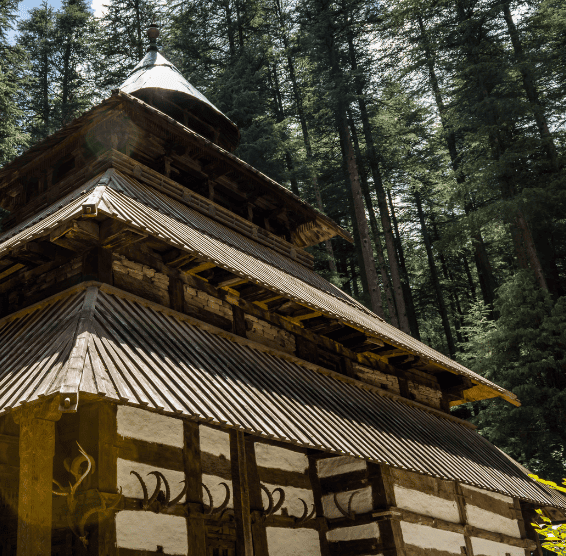

Mystical Facts
Himachal Pradesh, known as Dev Bhumi or the Land of the Gods, is full of powerful myths, spiritual beliefs, and old legends that are very important to people's lives. These stories bring the mountains, rivers, and valleys to life, giving travelers more than just beautiful views - they give them a living history. Every village in Himachal has its own god, called a Gram Devta, that believed to protect and guide the people. People take these gods out of beautifully carved wooden temples and put them in Palaki during local fairs and festivals. People actively worship and even "consult" significant gods and goddesses like Hadimba Devi (Manali), Jamlu Devta (Malana), and Narayan Devta (Kullu) when they need to make local decisions. Himachal has a very strong connection to the Mahabharata. People in the region believe the Pandavas lived in isolation in these hills. The Hidimba Temple in Manali is a tribute to Bhima's wife, a goddess of the forest. People believe that Lord Indra took Yudhishthira to heaven at Chandratal Lake, which is high up in Spiti valley. There's plenty of mystery related to the sacred lakes here. Hindus, Buddhists, and Sikhs all worship Rewalsar Lake, which is linked to Guru Padmasambhava. People say that Parashar Lake is formed where Sage Parashar meditated. People believe of these lakes as alive beings with a divine presence. Malana is a village known for its strange myths and customs. People in the locality say they are descendants of Alexander the Great's army, and the deity they worship, Jamlu Devta, strictly regulates daily life. People from outside are expected to follow certain rules here, like not touching the walls and people. These mystical tales are more than just stories, they are part of Himachal's culture and charm. Himachal offers a spiritual journey beyond what you can see for travelers who are curious about the spiritual world. These mystical tales are more than just stories, they are part of Himachal's culture and charm. Himachal offers a spiritual journey beyond what you can see for travelers who are curious about the spiritual world. Mythology is alive in Himachal Pradesh in the form of whispered forest tales and everyday rituals. The villagers think that spirits live in winds, trees, and lakes, where they either test or guide people passing by. In this timeless Himalayan landscape, some communities continue to consult oracles during festivals, fusing ancient mysticism with the rhythms of life.
Himachal Pradesh, known as Dev Bhumi or the Land of the Gods, is full of powerful myths, spiritual beliefs, and old legends that are very important to people's lives. These stories bring the mountains, rivers, and valleys to life, giving travelers more than just beautiful views - they give them a living history. Every village in Himachal has its own god, called a Gram Devta, that believed to protect and guide the people. People take these gods out of beautifully carved wooden temples and put them in Palaki during local fairs and festivals. People actively worship and even "consult" significant gods and goddesses like Hadimba Devi (Manali), Jamlu Devta (Malana), and Narayan Devta (Kullu) when they need to make local decisions. Himachal has a very strong connection to the Mahabharata. People in the region believe the Pandavas lived in isolation in these hills. The Hidimba Temple in Manali is a tribute to Bhima's wife, a goddess of the forest. People believe that Lord Indra took Yudhishthira to heaven at Chandratal Lake, which is high up in Spiti valley. There's plenty of mystery related to the sacred lakes here. Hindus, Buddhists, and Sikhs all worship Rewalsar Lake, which is linked to Guru Padmasambhava. People say that Parashar Lake is formed where Sage Parashar meditated. People believe of these lakes as alive beings with a divine presence. Malana is a village known for its strange myths and customs. People in the locality say they are descendants of Alexander the Great's army, and the deity they worship, Jamlu Devta, strictly regulates daily life. People from outside are expected to follow certain rules here, like not touching the walls and people. These mystical tales are more than just stories, they are part of Himachal's culture and charm. Himachal offers a spiritual journey beyond what you can see for travelers who are curious about the spiritual world. These mystical tales are more than just stories, they are part of Himachal's culture and charm. Himachal offers a spiritual journey beyond what you can see for travelers who are curious about the spiritual world. Mythology is alive in Himachal Pradesh in the form of whispered forest tales and everyday rituals. The villagers think that spirits live in winds, trees, and lakes, where they either test or guide people passing by. In this timeless Himalayan landscape, some communities continue to consult oracles during festivals, fusing ancient mysticism with the rhythms of life.
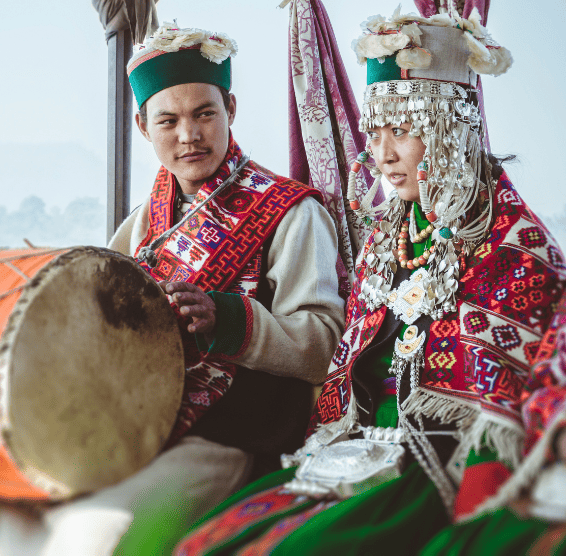
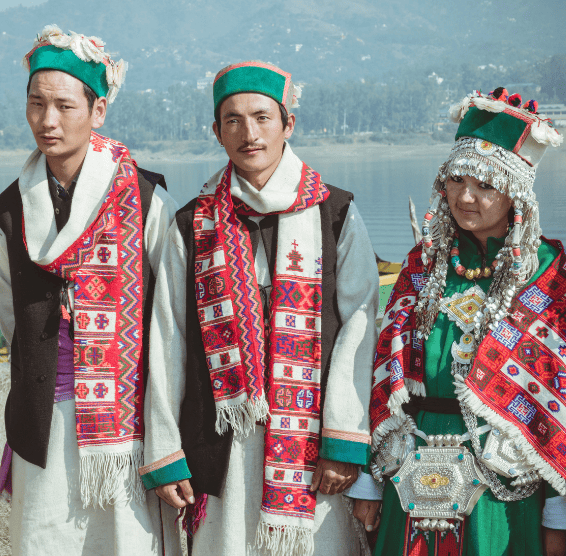
Local Culture & Fests
The cultural identity of Himachal Pradesh is a vibrant mix of traditions, spirituality, changing seasons, and community life. The state's geography in the Himalayas is deeply rooted, and its living heritage is shaped by Hindu, Buddhist, and ethnic cultures. The elegant and warm methods of life in Himachal is what makes it special. Most communities depend on farming and raising animals, which naturally changes with the seasons. Stone and wood houses ( kath kuni ), woolen clothes like shawls and Kulluvi caps and long joint families are all examples of a way of life that is in harmony with nature. People have a strong connection with their gods. Each village has its own Devta, which they worship and ask for advice on community issues. Dance and music are lively ways to express yourself. The entire nation of India celebrates life through dance and song, from the rhythmic Nati of Kullu to the slow, spiritual dances of Spiti during The festival of Losar. At local fairs and gatherings, you can hear traditional instruments like the narsingha and dhol. While working in the fields, women sing folk songs that tell stories about love, mythologies, and local history. The art forms of Himachal are just as beautiful. People all over India love Kullu and Kinnauri shawls that are handwoven, Chamba rumals that are carefully embroidered, wood carvings, and silver jewelry. Kangra's Pahari miniature paintings are also an eternal symbol of the state's refined taste. Himachal is a fusion of Hindu and Tibetan Buddhist traditions. There are many temples and monasteries in the area, such as the Bhima Kali Temple in Sarahan and the old Tabo Monastery & Key Monastery in Spiti. These places are more than just structures, they are places where people can come together to express their beliefs. Kullu Dussehra, Mandi Shivratri, Sangla Holi, the festival of Losar, and Phulaich are some of the colorful, deeply symbolic, and community-based festivals in Himachal. The Rampur Lavi Fair and Nalwari Fair are examples of seasonal fairs that follow the old Hindu calendar and local trade traditions. Even though there are multiple languages and traditions in Himachal, the people there all share a sense of respect, hospitality, and spiritual rhythm. For travelers, these cultural treasures give them a glimpse into a Mystical Himachal's world that is real, welcoming, and never changes.
The cultural identity of Himachal Pradesh is a vibrant mix of traditions, spirituality, changing seasons, and community life. The state's geography in the Himalayas is deeply rooted, and its living heritage is shaped by Hindu, Buddhist, and ethnic cultures. The elegant and warm methods of life in Himachal is what makes it special. Most communities depend on farming and raising animals, which naturally changes with the seasons. Stone and wood houses ( kath kuni ), woolen clothes like shawls and Kulluvi caps and long joint families are all examples of a way of life that is in harmony with nature. People have a strong connection with their gods. Each village has its own Devta, which they worship and ask for advice on community issues. Dance and music are lively ways to express yourself. The entire nation of India celebrates life through dance and song, from the rhythmic Nati of Kullu to the slow, spiritual dances of Spiti during The festival of Losar. At local fairs and gatherings, you can hear traditional instruments like the narsingha and dhol. While working in the fields, women sing folk songs that tell stories about love, mythologies, and local history. The art forms of Himachal are just as beautiful. People all over India love Kullu and Kinnauri shawls that are handwoven, Chamba rumals that are carefully embroidered, wood carvings, and silver jewelry. Kangra's Pahari miniature paintings are also an eternal symbol of the state's refined taste. Himachal is a fusion of Hindu and Tibetan Buddhist traditions. There are many temples and monasteries in the area, such as the Bhima Kali Temple in Sarahan and the old Tabo Monastery & Key Monastery in Spiti. These places are more than just structures, they are places where people can come together to express their beliefs. Kullu Dussehra, Mandi Shivratri, Sangla Holi, the festival of Losar, and Phulaich are some of the colorful, deeply symbolic, and community-based festivals in Himachal. The Rampur Lavi Fair and Nalwari Fair are examples of seasonal fairs that follow the old Hindu calendar and local trade traditions. Even though there are multiple languages and traditions in Himachal, the people there all share a sense of respect, hospitality, and spiritual rhythm. For travelers, these cultural treasures give them a glimpse into a Mystical Himachal's world that is real, welcoming, and never changes.
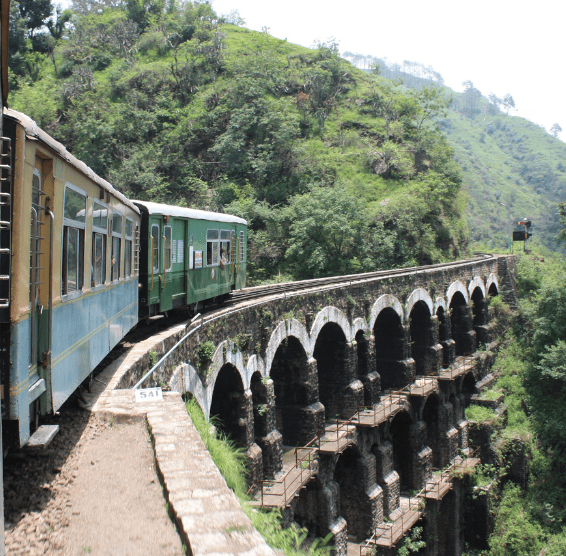
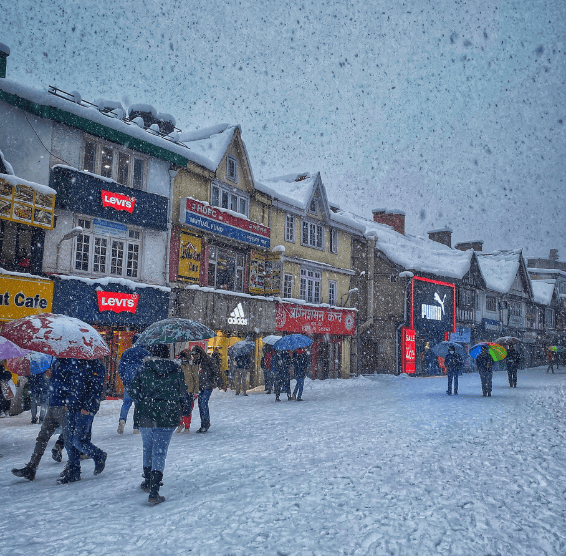
Local Travel Tips
Wear heavy clothing: The weather in the hills can change quickly. During the summer, the temperature can get up to 15–30°C, but the nights are cool. You need thick wool clothes in the winter. Bring a warm jacket, rain gear, and even a windcheaters. One piece of advice, "Windcheater is a must" in Shimla's winter. Important Documents: Always have your original ID (Aadhaar, passport) and copies of your reservations with you. Keep copies on your phone. If you're going to a restricted area, check what you need to do (some high-altitude areas need permits and meds like Diamox). Cash & Cards: ATMs exist in larger towns, but many mountain villages do not have cash machinesgyanrachanatours.com. Always carry enough cash (or small change) especially when headed to remote areas like Spiti or Pangi valley. Health Tips: Only drink bottled or purified water. Don't eat food that hasn't been cooked properly by a roadside vendor. Bring a basic first aid kit with things like pain relievers, anti-diarrhea meds, altitude sickness tablets like Diamox, bandages, sanitizer, and more. If you go above 3,000–4,000m, take your time to get used to it/acclimatization. Road Safety: The roads in the Himalayas are winding and can be dangerous during the monsoon season (July to August). Give yourself more time to get there, don't drive after dark, and always use a good car (local drivers know the area). If you're going trekking, hire porters or guides through official channels. Connectivity: Don't expect good mobile or internet service at high altitudes. Download maps that work without an internet connection ahead of time and share your plans with your family. It's a good idea to write down the numbers for the police, medical services, and the nearest hospital. Himachali people are polite and friendly. Say hello to older people with respect, like a nod or "Namaste," because everyone in the village is family. Ask for permission before taking pictures of people or religious events. Take off your shoes before going into homes and temples. Follow rules for being quiet and clean (no honking in villages). Plan for Kids and Seniors: If you're traveling with kids or seniors, pick places that are lower in altitude and have comfortable places to stay. Shimla (2,100m) and Dharamshala (1,450m) are good for families, but very high passes like Rohtang and Roopkund can be hard on the lungs. Ask for rooms on lower floors when you book hotels that have heating and are easy to get to. A lot of travelers say that the weather is nicer and there are fewer people in the off-season (feb to april mid and july to september end). If you follow these tips, your trip to Himachal will be safe, smooth, and fun.
Wear heavy clothing: The weather in the hills can change quickly. During the summer, the temperature can get up to 15–30°C, but the nights are cool. You need thick wool clothes in the winter. Bring a warm jacket, rain gear, and even a windcheaters. One piece of advice, "Windcheater is a must" in Shimla's winter. Important Documents: Always have your original ID (Aadhaar, passport) and copies of your reservations with you. Keep copies on your phone. If you're going to a restricted area, check what you need to do (some high-altitude areas need permits and meds like Diamox). Cash & Cards: ATMs exist in larger towns, but many mountain villages do not have cash machinesgyanrachanatours.com. Always carry enough cash (or small change) especially when headed to remote areas like Spiti or Pangi valley. Health Tips: Only drink bottled or purified water. Don't eat food that hasn't been cooked properly by a roadside vendor. Bring a basic first aid kit with things like pain relievers, anti-diarrhea meds, altitude sickness tablets like Diamox, bandages, sanitizer, and more. If you go above 3,000–4,000m, take your time to get used to it/acclimatization. Road Safety: The roads in the Himalayas are winding and can be dangerous during the monsoon season (July to August). Give yourself more time to get there, don't drive after dark, and always use a good car (local drivers know the area). If you're going trekking, hire porters or guides through official channels. Connectivity: Don't expect good mobile or internet service at high altitudes. Download maps that work without an internet connection ahead of time and share your plans with your family. It's a good idea to write down the numbers for the police, medical services, and the nearest hospital. Himachali people are polite and friendly. Say hello to older people with respect, like a nod or "Namaste," because everyone in the village is family. Ask for permission before taking pictures of people or religious events. Take off your shoes before going into homes and temples. Follow rules for being quiet and clean (no honking in villages). Plan for Kids and Seniors: If you're traveling with kids or seniors, pick places that are lower in altitude and have comfortable places to stay. Shimla (2,100m) and Dharamshala (1,450m) are good for families, but very high passes like Rohtang and Roopkund can be hard on the lungs. Ask for rooms on lower floors when you book hotels that have heating and are easy to get to. A lot of travelers say that the weather is nicer and there are fewer people in the off-season (feb to april mid and july to september end). If you follow these tips, your trip to Himachal will be safe, smooth, and fun.
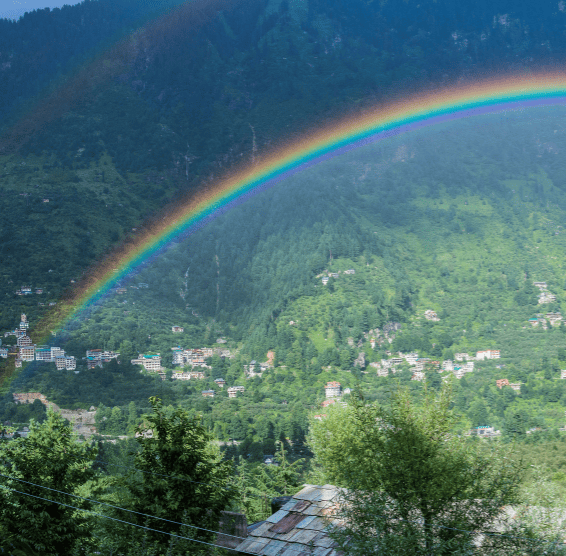

ECO Tourism Tips
The cultural identity of Himachal Pradesh is a vibrant mix of traditions, spirituality, changing seasons, and community life. The state's geography in the Himalayas is deeply rooted, and its living heritage is shaped by Hindu, Buddhist, and ethnic cultures. The elegant and warm methods of life in Himachal is what makes it special. Most communities depend on farming and raising animals, which naturally changes with the seasons. Stone and wood houses ( kath kuni ), woolen clothes like shawls and Kulluvi caps and long joint families are all examples of a way of life that is in harmony with nature. People have a strong connection with their gods. Each village has its own Devta, which they worship and ask for advice on community issues. Dance and music are lively ways to express yourself. The entire nation of India celebrates life through dance and song, from the rhythmic Nati of Kullu to the slow, spiritual dances of Spiti during The festival of Losar. At local fairs and gatherings, you can hear traditional instruments like the narsingha and dhol. While working in the fields, women sing folk songs that tell stories about love, mythologies, and local history. The art forms of Himachal are just as beautiful. People all over India love Kullu and Kinnauri shawls that are handwoven, Chamba rumals that are carefully embroidered, wood carvings, and silver jewelry. Kangra's Pahari miniature paintings are also an eternal symbol of the state's refined taste. Himachal is a fusion of Hindu and Tibetan Buddhist traditions. There are many temples and monasteries in the area, such as the Bhima Kali Temple in Sarahan and the old Tabo Monastery & Key Monastery in Spiti. These places are more than just structures, they are places where people can come together to express their beliefs. Kullu Dussehra, Mandi Shivratri, Sangla Holi, the festival of Losar, and Phulaich are some of the colorful, deeply symbolic, and community-based festivals in Himachal. The Rampur Lavi Fair and Nalwari Fair are examples of seasonal fairs that follow the old Hindu calendar and local trade traditions. Even though there are multiple languages and traditions in Himachal, the people there all share a sense of respect, hospitality, and spiritual rhythm. For travelers, these cultural treasures give them a glimpse into a Mystical Himachal's world that is real, welcoming, and never changes.
The cultural identity of Himachal Pradesh is a vibrant mix of traditions, spirituality, changing seasons, and community life. The state's geography in the Himalayas is deeply rooted, and its living heritage is shaped by Hindu, Buddhist, and ethnic cultures. The elegant and warm methods of life in Himachal is what makes it special. Most communities depend on farming and raising animals, which naturally changes with the seasons. Stone and wood houses ( kath kuni ), woolen clothes like shawls and Kulluvi caps and long joint families are all examples of a way of life that is in harmony with nature. People have a strong connection with their gods. Each village has its own Devta, which they worship and ask for advice on community issues. Dance and music are lively ways to express yourself. The entire nation of India celebrates life through dance and song, from the rhythmic Nati of Kullu to the slow, spiritual dances of Spiti during The festival of Losar. At local fairs and gatherings, you can hear traditional instruments like the narsingha and dhol. While working in the fields, women sing folk songs that tell stories about love, mythologies, and local history. The art forms of Himachal are just as beautiful. People all over India love Kullu and Kinnauri shawls that are handwoven, Chamba rumals that are carefully embroidered, wood carvings, and silver jewelry. Kangra's Pahari miniature paintings are also an eternal symbol of the state's refined taste. Himachal is a fusion of Hindu and Tibetan Buddhist traditions. There are many temples and monasteries in the area, such as the Bhima Kali Temple in Sarahan and the old Tabo Monastery & Key Monastery in Spiti. These places are more than just structures, they are places where people can come together to express their beliefs. Kullu Dussehra, Mandi Shivratri, Sangla Holi, the festival of Losar, and Phulaich are some of the colorful, deeply symbolic, and community-based festivals in Himachal. The Rampur Lavi Fair and Nalwari Fair are examples of seasonal fairs that follow the old Hindu calendar and local trade traditions. Even though there are multiple languages and traditions in Himachal, the people there all share a sense of respect, hospitality, and spiritual rhythm. For travelers, these cultural treasures give them a glimpse into a Mystical Himachal's world that is real, welcoming, and never changes.
Why Choose Our Himachal Tour Packages?
Local Himachali Experts
We focus specially on Himachal Tour Packages.
Affordable Packages
Best prices for Himachal Tour packages. No Hidden
Charges.
Custom Tour Itineraries
Specially curated Himachal Tour Packages for couples,
families and groups.
Fast Booking
Accommodation, Transport, Sightseeing - all covered.
24/7 Support
Assistance before, during and after your trip.
Safe & Trusted Travel
Experienced Himachali drivers, local expert guides and complete
safety measures.

Frequently Asked Questions ?
How to reach Himachal?
Best time to visit Himachal?
In general, spring (March to June) and autumn (September to November) these are the best times. The weather in the summer is nice for hiking and sightseeing, with temperatures between 15-30 degrees Celsius. The monsoon season (July to August) brings heavy rains and landslides that make it hard to travel. Winter(December to February) is a great time to do things in the snow in places like Khajjiar, Manali and Kufri. If you like snow, visit in December or January. If you like mild weather, go in April, May, or June, or after the monsoon season.
What are the main attractions in Himachal?
Hill stations, temples, and other natural wonders can be found all over the state. The colonial capital of Shimla, the gateway to the high mountains of Manali, the Tibetan culture and temples of Dharamshala/McLeodganj, the Kullu Valley, the Kasol/Parvati Valley, Chamba, Dalhousie, Khajjiar, and others are among the top destinations. The Great Himalayan and Pin Valley National Parks, the high passes (Rohtang, Roopkund), and the ski areas (Solang, sissu) are well-known destinations for adventure seekers.
Are there any cultural or local rules I should know?
What's essential is respect. Himachalis place a high importance on tradition, when entering temples or homes, take off your shoes and always greet elders with kindness. In villages, dress modestly. Keep out of loud noises and littering close to places of worship. Before taking pictures of people or rituals, ask. Observe local dress customs because even women can put on a purdah (veil) on festival days and in isolated villages. Respecting the local culture is greatly enhanced by these small gestures.
Can I travel to Himachal with kids or elderly people?
Yes, there are plenty of family-friendly amenities in hill towns. Cities with good hotels and easy access (car road all the way up to town) include Shimla, Dharamshala, and Kullu. Plan shorter daily trips for kids and seniors, and stay away from extremely high heights (above about 3,500m). Larger towns have the best medical facilities. Advice: Request accommodation in low-altitude regions or on the main mall roads when making hotel or tour package reservations. Even if you believe it to be "summer," bring warm clothing.
What are some offbeat or hidden places in Himachal?
Himachal has a lot of undiscovered treasures beyond the well-known locations. Think about isolated valleys like Gushaini (near Tosh, hot spring), Bara Bhangal (Nirmand), Chitkul (Kinnaur), Malana (near Kasol), Pangi Valley, Tara Devi (Shimla's local shrine), or Tirthan (Great Himalayan Park). Trekking in the pure nature of the Great Himalayan National Park is possible. Villages like Jibhi or Kalpa (apple orchards) provide peace and quiet for a peaceful getaway. Passionate tourists are rewarded with serene surroundings and genuine culture in these less popular locations.
What type of accommodation is available in Himachal?
Everything from basic homestays to luxurious hotels. Hotels and guesthouses can be found on Mall Roads or close to transportation hubs in large towns. A lot of tourists choose Himachal tour packages that include cosy hotels or cottages. In villages, homestays and eco-lodges are popular for a more rustic experience (hosts often serve fresh local food). In approved locations, camping is permitted. Popular spots fill up fast during festival seasons, so make reservations well in advance.
What should I pack for a Himachal trip?
Bring fleeces or jackets for the evenings, and T-shirts and sweatshirts for the day. Bring warm caps, scarves and heavy woollen clothing in the autumn and winter. It's essential to have quality hiking shoes or instructors. A durable raincoat, polarised sunglasses, sunscreen, a reusable water bottle, and basic personal medications are additional essentials. Bring a daypack, torch, insect repellent and energy bars if you plan to trek or participate in adventure sports. Copies of identification documents, a camera, and a power bank are also very helpful.
What are the best adventure activities in Himachal?
Trekking trails (Triund, Hampta, Pin Parvati, etc.) abound in the Himalayas, river rafting is popular on the Beas in Kullu-Manali, and paragliding has gained popularity in Kullu/Bir-Billing. Solang (near Manali) and Kufri (near Shimla) offer skiing in the winter and horse rides. Other activities include ice-skating, mountain biking, rock climbing, camping, and witnessing wildlife in national parks. In some valleys like Manali you can also try hot-air ballooning or ziplining. (Himachal's adventure tour packages highlight a number of these activities.)
Is Himachal safe for solo or female travelers?
In general, yes. Travellers frequently acknowledge the hospitality of the people of Himachal Pradesh and low crime rate in Himachal Pradesh, which is thought to be safer than many other parts of India. However, always exercise common sense and take security measures, such as staying away from remote locations after dark and notifying someone of your plans. Additionally, official advice advises against driving after midnight and to confirm that your driver is trustworthy and varified. Travelling by day, staying in decent hotels, and participating in group tours are common ways for women and solo tourists to successfully explore Himachal. All things considered, practicing common sense safety (as you would everywhere) guarantees a safe and pleasurable trip.



